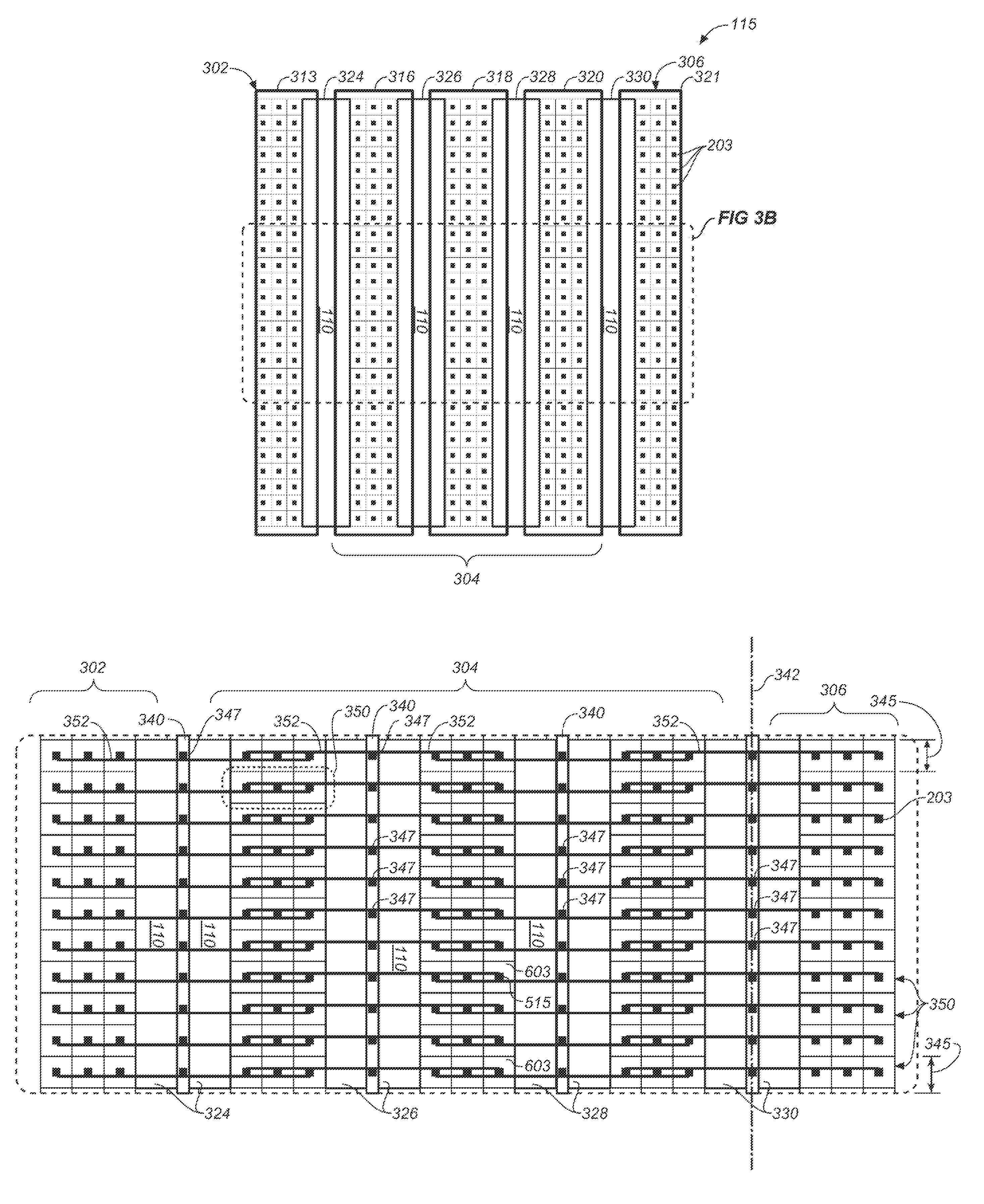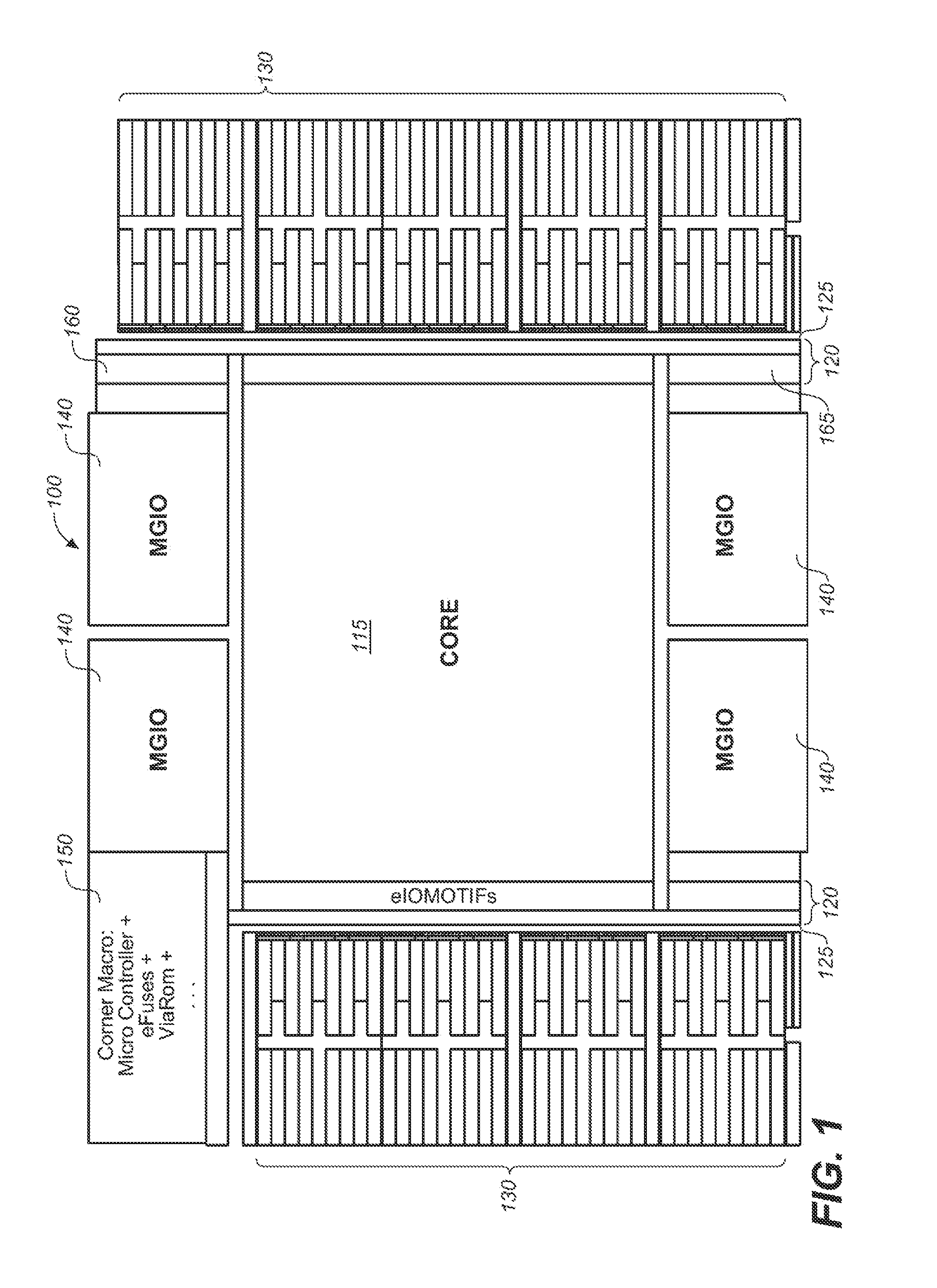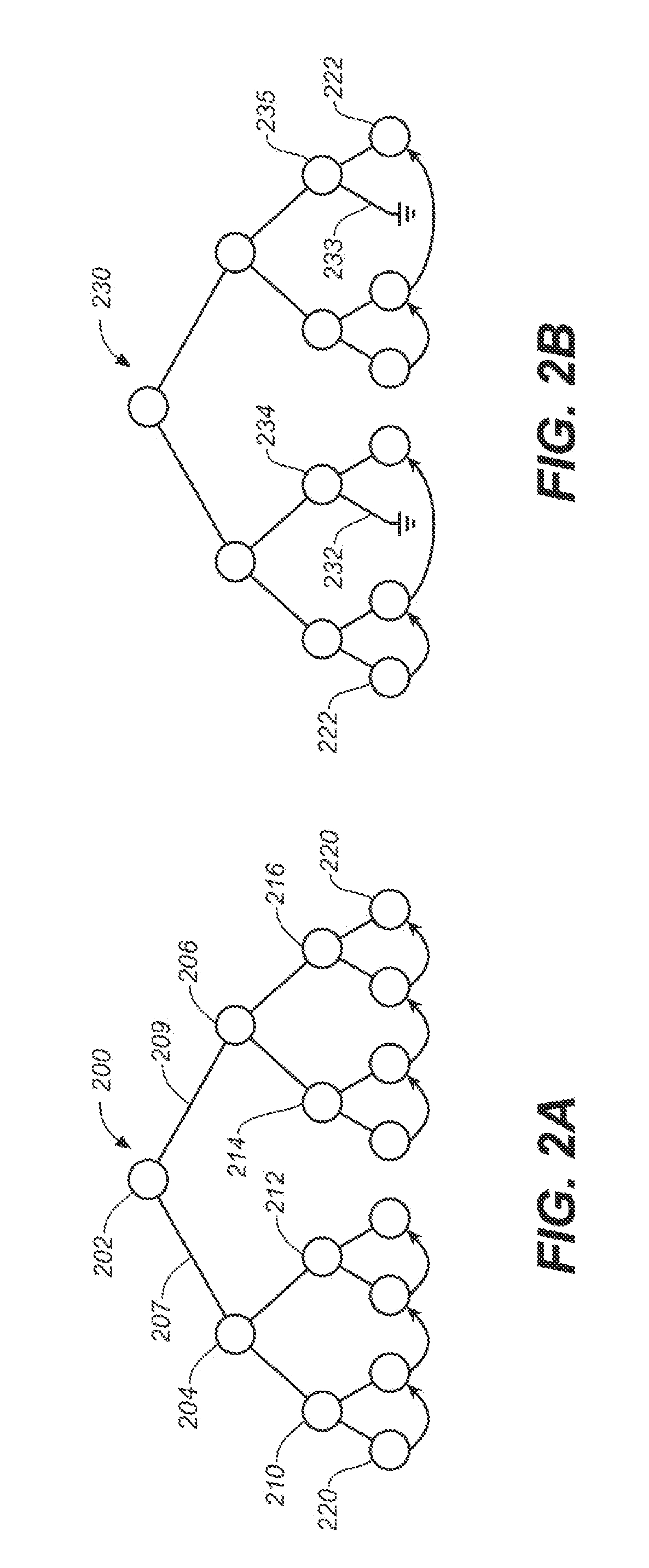Clock network fishbone architecture for a structured ASIC manufactured on a 28 NM CMOS process lithographic node
a technology of structured asics and fishbones, which is applied in the direction of power consumption reduction, pulse technique, generating/distributing signals, etc., can solve the problems of wasting significant power in transitions within blocks, consuming time and effort, and limiting the maximum performance of the entire system
- Summary
- Abstract
- Description
- Claims
- Application Information
AI Technical Summary
Benefits of technology
Problems solved by technology
Method used
Image
Examples
Embodiment Construction
[0069]The method and apparatus of the present invention may be described in software, such as the representation of the invention in an EDA tool, or realized in hardwire, such as the actual physical instantiation.
[0070]Regarding the floorplan of the present invention, the drawings sometimes show elements as blocks that in a physical implementation may differ from this stylized representation, but the essential features of the floorplan should be apparent to one of ordinary skill in the art from the teachings herein. The exact placement of the blocks vis-à-vis neighboring blocks can vary in an actual chip from the simple stylized representations as shown in the figures, and in addition there may be several layers in an ASIC chip that achieve the functionality shown, superimposed on one another, and not necessarily a single layer as shown in the drawings. This is true for most of the elements in the present invention, as understood by one of ordinary skill, and that does not detract f...
PUM
 Login to View More
Login to View More Abstract
Description
Claims
Application Information
 Login to View More
Login to View More - R&D
- Intellectual Property
- Life Sciences
- Materials
- Tech Scout
- Unparalleled Data Quality
- Higher Quality Content
- 60% Fewer Hallucinations
Browse by: Latest US Patents, China's latest patents, Technical Efficacy Thesaurus, Application Domain, Technology Topic, Popular Technical Reports.
© 2025 PatSnap. All rights reserved.Legal|Privacy policy|Modern Slavery Act Transparency Statement|Sitemap|About US| Contact US: help@patsnap.com



